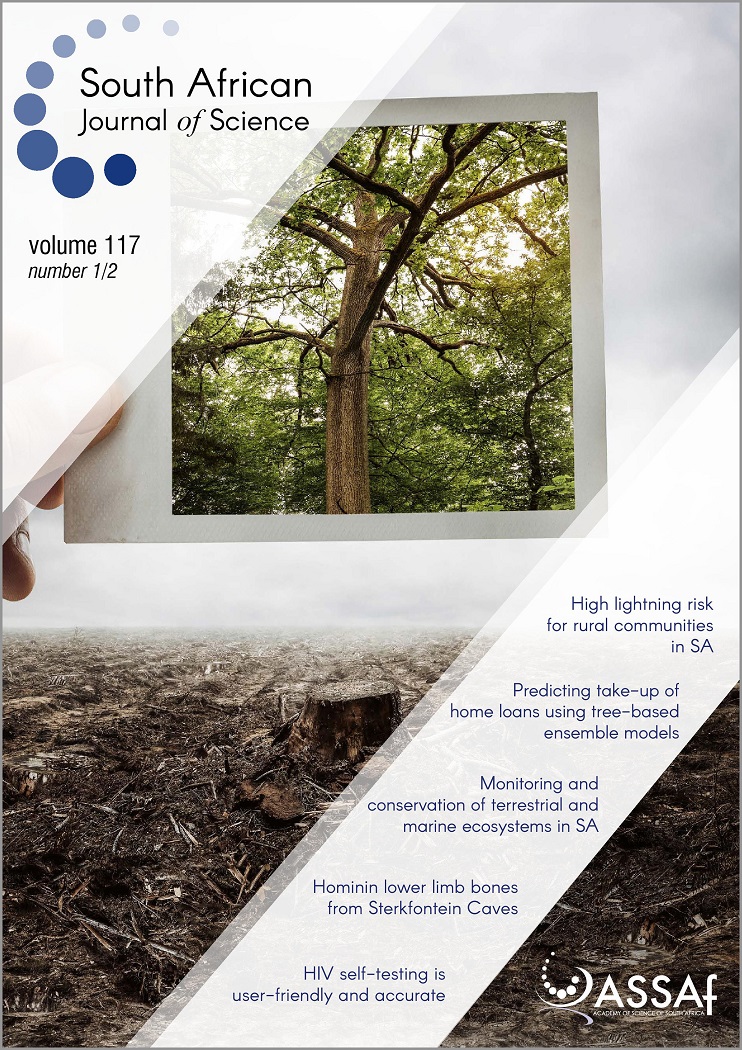Teatime in Kruger: Tailoring the application of the Tea Bag Index approach to an African savanna
DOI:
https://doi.org/10.17159/sajs.2021/6846Keywords:
carbon cycling, herbivory, herbivore loss, nutrient-rich, semi-aridAbstract
Attempts to obtain standardised decomposition data to determine potential drivers of carbon release have evolved from the use of cotton strips and standardised leaf litter mixtures to the most recent Tea Bag Index (TBI). The TBI is an internationally standardised method to collect comparable, globally distributed data on decomposition rate and litter stabilisation, using commercially available tea bags as standardised test kits. As this index was developed as a citizen science project in the northern hemisphere, we aimed to highlight the potential value – and pitfalls – of its application in a subtropical African savanna. We furthermore aimed to expand on existing protocol details and propose amendments to achieve an enhanced understanding of decomposition dynamics across temporal and spatial scales in African ecosystems. Proposed adaptations include extended incubation periods for long-term monitoring studies, the burial of more tea bags to account for potential losses, and the use of additional equipment to enhance effective sampling. These adaptations provide a system-specific protocol which can facilitate studies aimed to understand the interactions between top-down drivers (e.g. herbivory, fire, climate variability) and bottom-up controls (e.g. decomposition) in carbon flux dynamics of savanna ecosystems. Application of the proposed extended protocol in a semi-arid savanna provided results which reinforce the potential value of the TBI in an African context.
Significance:
- The TBI is a relatively easy and cost-effective approach to gather globally distributed data on potential decomposition rate and inherent carbon flux, yet it was developed and primarily tested in boreal and temperate ecosystems.
- The use of more paired tea bag replicates and additional equipment is a viable means to mitigate tea bag losses to several savanna-based agents of disturbance, while enabling confident conclusions made from statistical results and improved estimates of the TBI. High recovery success across disturbance treatments and incubation periods suggest that the TBI can be applied successfully to spatial and temporal decomposition studies.
Published
Issue
Section
License

All articles are published under a Creative Commons Attribution 4.0 International Licence
Copyright is retained by the authors. Readers are welcome to reproduce, share and adapt the content without permission provided the source is attributed.
Disclaimer: The publisher and editors accept no responsibility for statements made by the authors
How to Cite
- Abstract 837
- PDF 740
- EPUB 206
- XML 237













.png)